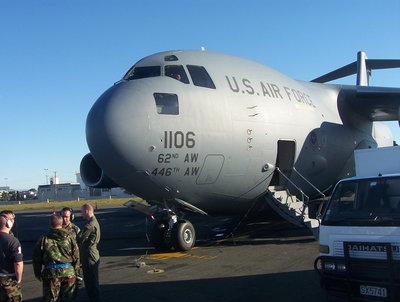
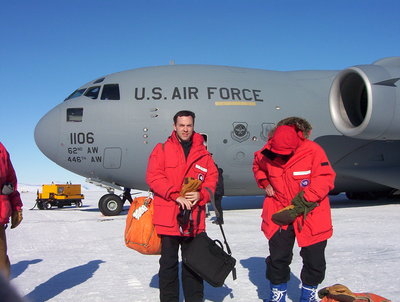
The flight from New Zealand to McMurdo Station is on an Air Force plane with wheels and jet engines. This time of year, we don't "land" on land but instead on a runway made of frozen sea ice. That's New Zealand on the left and McMurdo on the right.
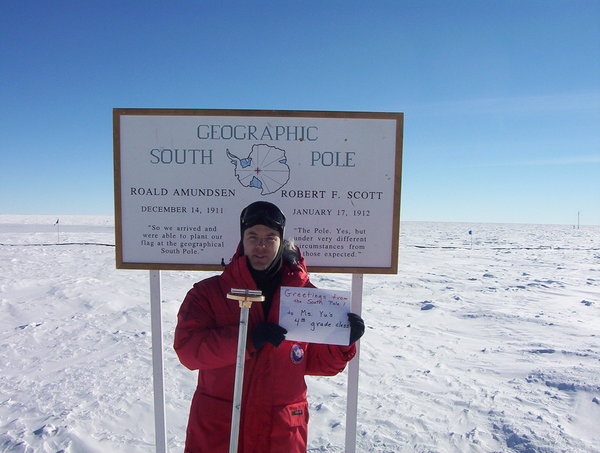
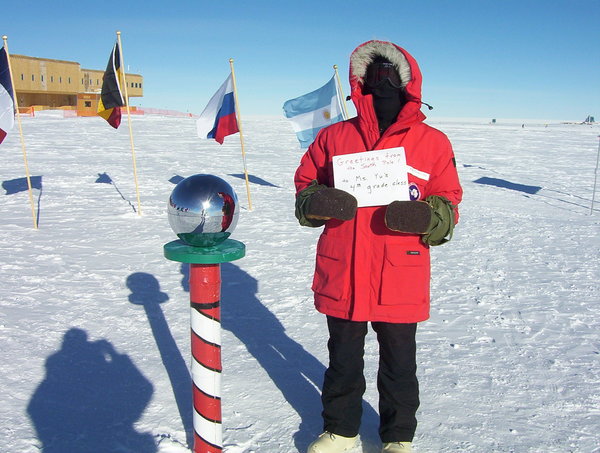



The flight from New Zealand to McMurdo Station is on an Air Force
plane with wheels and jet engines. This time of year, we don't "land"
on land but instead on a runway made of frozen sea ice. That's
New Zealand on the left and McMurdo on the right.
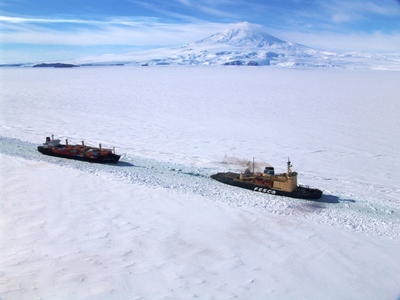
In January, the sea ice cracks and melts, the runway is no longer
usable, and icebreaker ships cut channels through the ice so that
cargo ships can deliver to McMurdo.
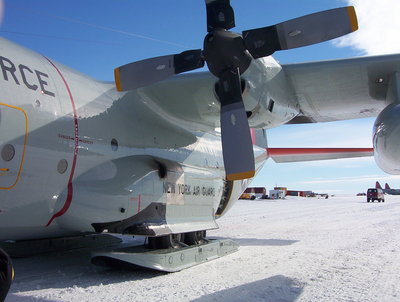
The flight from McMurdo to South Pole is on an Air Guard plane with
propellers and both wheels and skis. The wheels are used on the hard
ice runway at McMurdo, and the skis are used on the soft snow runway
at South Pole.
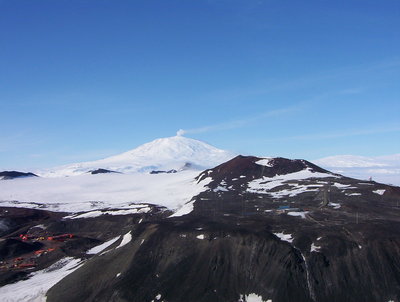
There is a lot of exposed land in the hills around McMurdo station.
There is even an active, steaming volcano 30 miles away called Mount
Erebus.
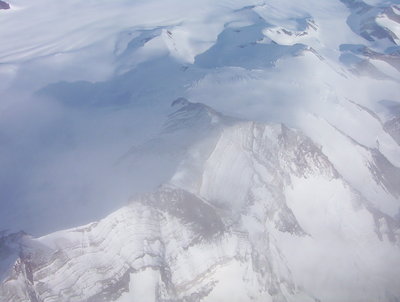
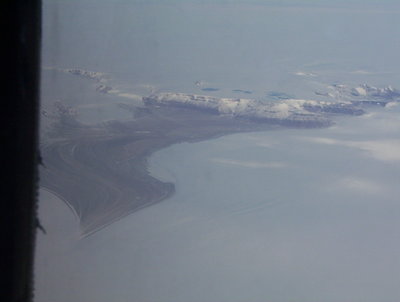
On the flight from McMurdo to South Pole, you can see many mountains and
glaciers about halfway between the two stations.
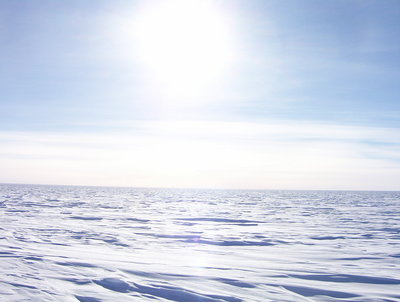
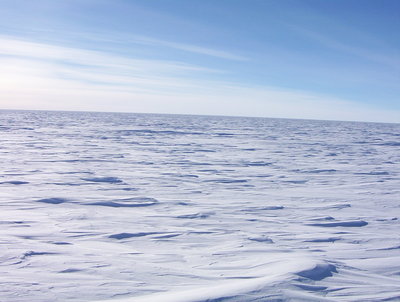
At South Pole, though, the snow is almost two miles thick, and the
horizon is flat and snow covered as far as the eye can see. Sometimes,
it looks like an ocean.
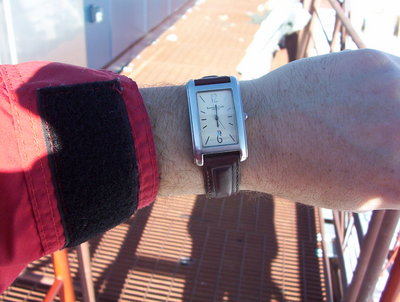
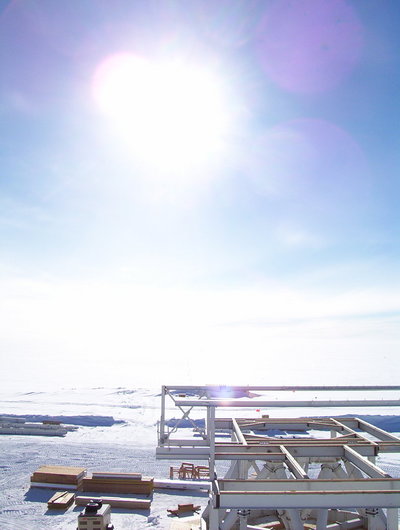
Good morning!. It's 6:00 AM, and here is where the Sun is.

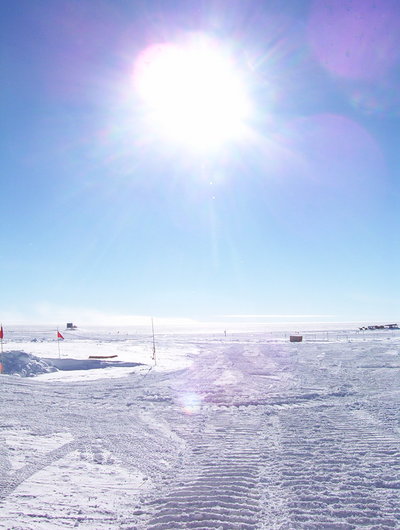
It's now 12:00 noon, and here is where the Sun is. The Sun never gets
very high in the sky at South Pole.
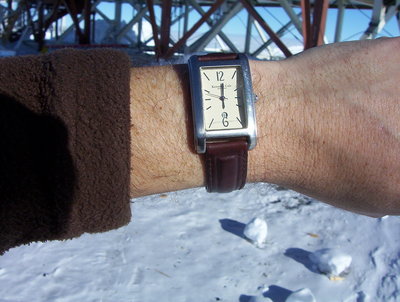
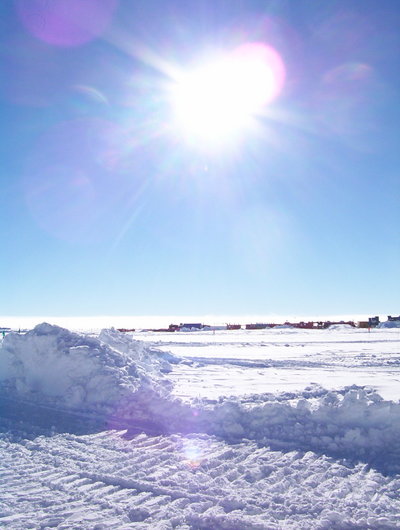
It's now 6:00 PM, and here is where the Sun is.

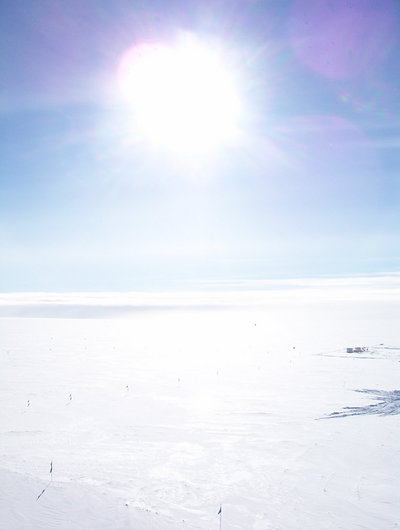
It's now 12:00 midnight, and the Sun is just as high in the sky!
Due to the Earth's rotation around its axis -- which goes right through South Pole -- the Sun appears to spin around us during a 24 hour period without getting higher or lower.
I have no plans to be at the South Pole during the winter, but it is a very pretty place then. The people that stay here can see stars, the Moon for half of the time, and often the Aurora Australis (Southern Lights).
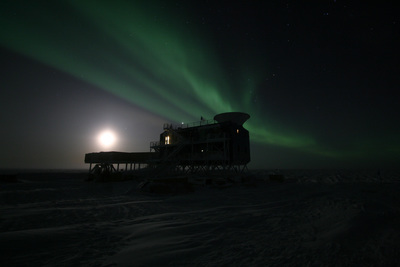
Denis Barkats, who stayed at the South Pole for the winter to run the
BICEP telescope, took this picture of the Moon and Aurora Australis.
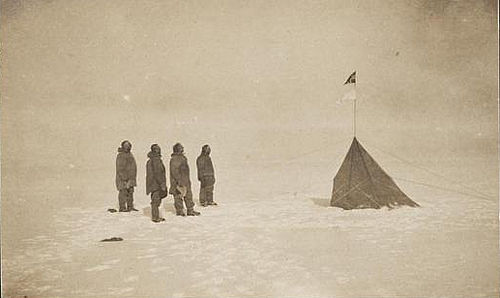
The Roald Amundsen team from Norway at the South Pole.
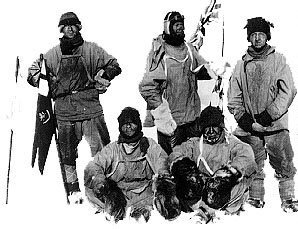
The Robert Scott team from Britain at the South Pole.
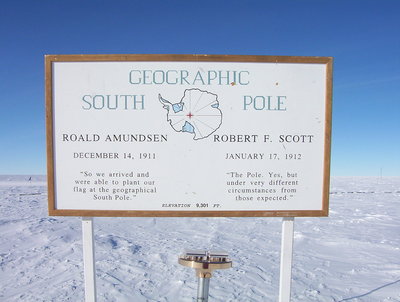
The South Pole station is named after both Amundsen and Scott.
After Amundsen and Scott, no one visited South Pole until an American plane flew there on October 31, 1956 -- just a little over 50 years ago. The South Pole has been occupied by people most of the time since then.

The American plane "Que Sera Sera" which flew to South Pole in 1956,
piloted by Gus Shinn.
The main reason people are here is to do science experiments. Some people (like me) are setting up telescopes that will do astronomy in the winter. Others are studying earthquakes around the world or climate change (the change in temperature and pollution in the atmosphere).
It takes many people to keep the station running, including people who: